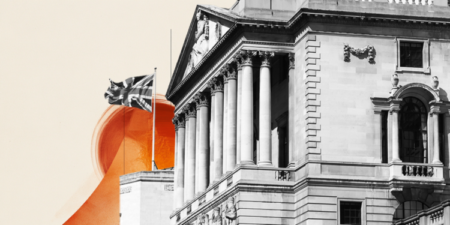- The US Dollar extends correction from earlier elevated levels.
- All eyes are on the US CPI release while President-elect Donald Trump remains silent on the tariff schemes.
- The US Dollar Index (DXY) dips below 110.00 and might even break below 109.00 on a disinflationary CPI release.
The US Dollar Index (DXY), which tracks the Greenback’s value against six major currencies, extends its correction from a two-year high above 110.00 reached on Monday and trades near 109.10 at the time of writing on Wednesday. It will be a very data-dependent day as all eyes are on the upcoming United States (US) Consumer Price Index (CPI) data for December on Wednesday after markets were caught by a surprise softer-than-expected Producer Price Index (PPI) the previous day. Because of that, expectations have swung now to the assumption the upcoming CPI numbers will be disinflationary and might see a revision of the timing when the Federal Reserve (Fed) will continue its rate cut cycle in 2025.
Thus, the US economic calendar will orbit around one thing: the US CPI for December. A look under the hood reveals estimates for the monthly headline reading ranging from 0.2% to 0.5% compared to the previous 0.3%. The monthly core reading has very tight estimates ranging between 0.2% and 0.3% compared to the 0.3% seen in November.
Given the tight expectation range for the core CPI reading, a number outside the range could be the most market-moving element. Any print below 0.2% will trigger substantial weakness in the US Dollar (USD), whereas a print above 0.3% will strengthen the USD.
Daily digest market movers: CPI on high importance
- At 13:30 GMT, the US Consumer Price Index data for December will be released.
- The monthly core CPI measure is expected to rise 0.2% compared to 0.3% the previous month. The monthly headline CPI reading is expected to increase steadily by 0.3%.
- The yearly core CPI reading should rise steadily by 3.3%, while the headline reading is expected to tick up 2.9% compared to 2.7% in November.
- At 14:00 GMT, Federal Reserve Bank of Chicago President Austan Goolsbee will discuss the economy at the Wisconsin Bankers Association 2025 Midwest Economic Forecast Forum.
- At 15:00 GMT, Minneapolis Fed President Neel Kashkari will give welcoming remarks and participate in a fireside chat with Jay Debertin, President and CEO of CHS, Inc., as part of the Minneapolis Fed’s 2025 Regional Economic Conditions Conference.
- At 16:00 GMT, Federal Reserve Bank of New York President John Williams delivers keynote remarks at the “CBIA Economic Summit and Outlook 2025” event organized by the Connecticut Business and Industry Association (CBIA) in Connecticut.
- Equities are marginally in the green on Wednesday, with traders awaiting the US CPI release.
- The CME FedWatch Tool projects a 97.3% chance that interest rates will be kept unchanged at current levels in the January meeting. Expectations are for the Federal Reserve (Fed) to remain data-dependent with uncertainties that could influence the inflation path once President-elect Donald Trump takes office on January 20.
- US yields are softening substantially. The 10-year benchmark trades around 4.774% at the time of writing on Wednesday, fading from its fresh 14-month high of 4.802% seen on Monday.
US Dollar Index Technical Analysis: Data-dependent as the Fed wants it
The US Dollar Index (DXY) has become volatile, and it has the Federal Reserve to thank. With little to no real guidance from Fed officials, markets need to treat each data point as an assessment of where they think the Fed will initiate its policy rate move this year. Jumping from one data point to the next, it is quite normal for the DXY to also jump around the chart and see a volatility peak.
On the upside, the 110.00 psychological level remains the key resistance to beat. Further up, the next big upside level to hit before advancing any further remains at 110.79. Once beyond there, it is quite a stretch to 113.91, the double top from October 2022.
On the downside, the DXY is testing the ascending trend line from December 2023, which currently comes in around 108.95 as nearby support. In case of more downside, the next support is 107.35. Further down, the next level that might halt any selling pressure is 106.52, with interim support at the 55-day Simple Moving Average (SMA) at 107.01.
US Dollar Index: Daily Chart
US Dollar FAQs
The US Dollar (USD) is the official currency of the United States of America, and the ‘de facto’ currency of a significant number of other countries where it is found in circulation alongside local notes. It is the most heavily traded currency in the world, accounting for over 88% of all global foreign exchange turnover, or an average of $6.6 trillion in transactions per day, according to data from 2022. Following the second world war, the USD took over from the British Pound as the world’s reserve currency. For most of its history, the US Dollar was backed by Gold, until the Bretton Woods Agreement in 1971 when the Gold Standard went away.
The most important single factor impacting on the value of the US Dollar is monetary policy, which is shaped by the Federal Reserve (Fed). The Fed has two mandates: to achieve price stability (control inflation) and foster full employment. Its primary tool to achieve these two goals is by adjusting interest rates. When prices are rising too quickly and inflation is above the Fed’s 2% target, the Fed will raise rates, which helps the USD value. When inflation falls below 2% or the Unemployment Rate is too high, the Fed may lower interest rates, which weighs on the Greenback.
In extreme situations, the Federal Reserve can also print more Dollars and enact quantitative easing (QE). QE is the process by which the Fed substantially increases the flow of credit in a stuck financial system. It is a non-standard policy measure used when credit has dried up because banks will not lend to each other (out of the fear of counterparty default). It is a last resort when simply lowering interest rates is unlikely to achieve the necessary result. It was the Fed’s weapon of choice to combat the credit crunch that occurred during the Great Financial Crisis in 2008. It involves the Fed printing more Dollars and using them to buy US government bonds predominantly from financial institutions. QE usually leads to a weaker US Dollar.
Quantitative tightening (QT) is the reverse process whereby the Federal Reserve stops buying bonds from financial institutions and does not reinvest the principal from the bonds it holds maturing in new purchases. It is usually positive for the US Dollar.
Read the full article here
















